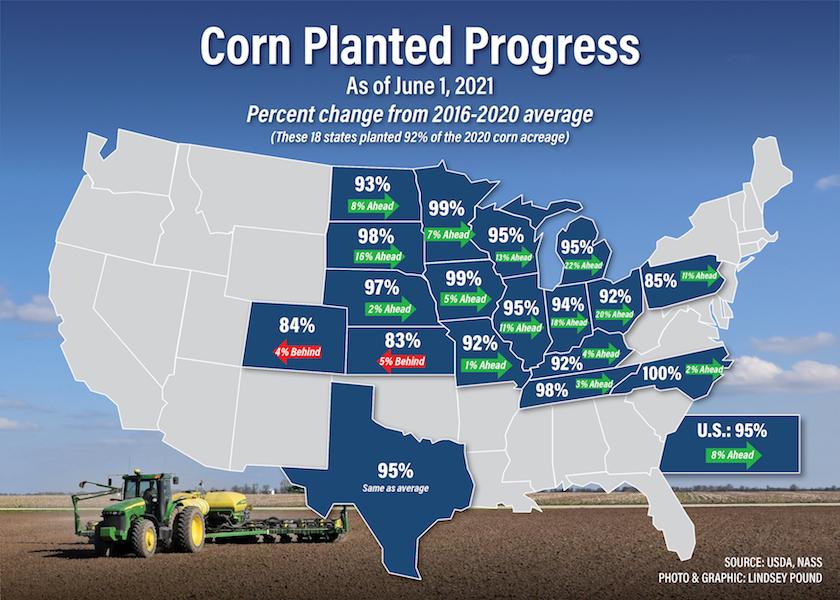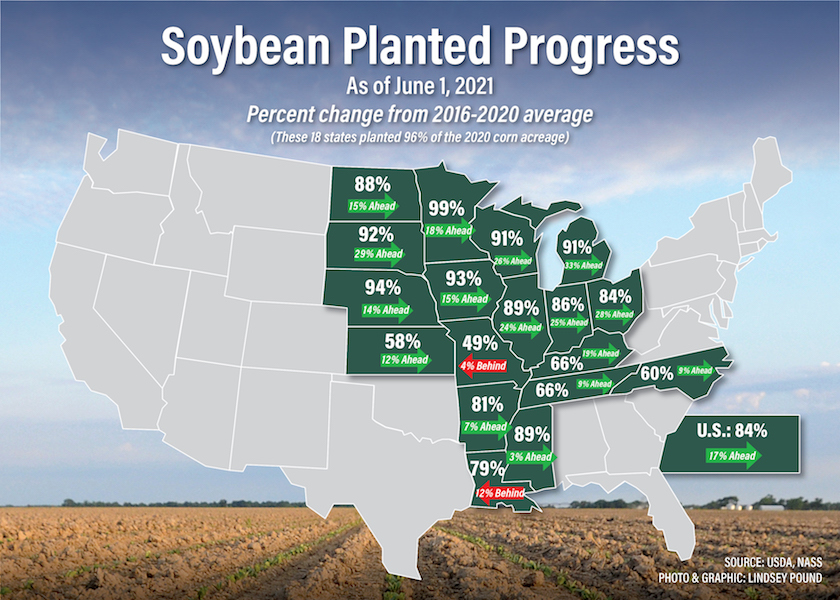95% of Corn Is Planted and Crop Conditions Are Off to Better Start Than 2020

Even with rains hitting areas of the Plains and Corn Belt last week, U.S. corn planting progressed to 95% complete, a five-point bump in a week and three percentage points ahead of last year's pace.
The latest USDA Crop Progress Report showed 10 out of 18 states have corn planting progress at 95% or better, with North Carolina farmers already wrapped up with this year’s planting season. Both South Dakota and Tennessee are tied in progress, sitting at 98% complete.
USDA also showed 81% of the nation’s corn crop is popping out of the ground, which was a 17-point jump in a week, with more than three-quarters of the crop considered good to excellent. USDA debuted the crop condition ratings for the first time this year, showing 76% of the corn in good to excellent shape. That compares to 74% the same time last year and the 70% rating expected by the trade.
85% of the corn crop in Illinois is rated in the top two categories. The crops in both Iowa and Wisconsin are considered 81% good to excellent, despite freezing temperatures covering portions of Iowa over the weekend.
The crop is struggling in areas seeing severe drought. USDA indicates less than half of North Dakota’s corn crop is in the top two categories, coming in at 48% good to excellent.

Soybean planting across the country climbed 9 points. At 84% complete, the 2021 soybean planting pace is 17 points ahead of the same time last year. 62% of the crop is emerged, which is 20 points ahead of the five-year average.
Drier weather in Minnesota continues to aid planting progress, as famers in across the state have 99% of the soybean crop planted. That beats last year by 18 points.
Cotton planting isn't happening as quickly this year. USDA says 64% of the cotton crop is planted, one percentage point behind average and tied with last year's pace.
Farmers in Arizona, Arkansas, Louisiana and Texas are also trailing the average planting pace for cotton.







